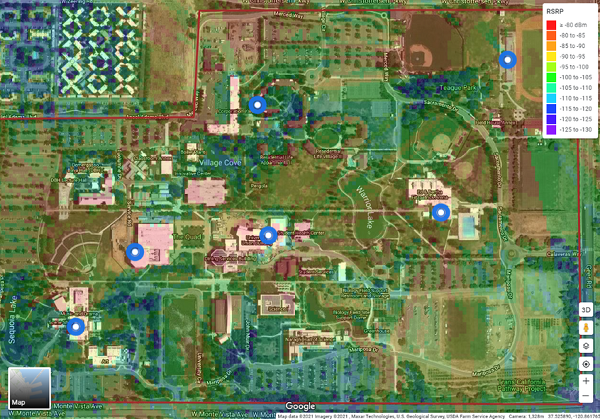Universities face many connectivity challenges when it comes to deploying campus-wide wireless networks. However, one California-based university has proven that it’s possible to have pervasive, reliable wireless broadband access with a private 5G mobile network.
California State University Stanislaus is deploying new 5G local area network (LAN) technology from Celona Networks, which uses the Citizens Broadband Radio Service (CBRS) cellular spectrum recently made available by the Federal Communications Commission (FCC). It is the first campus-wide implementation of the CBRS technology by a higher education institution.
Initially, the university is using the LAN to provide connectivity for collaborative outdoor learning centers used by more than 10,000 students and staff on campus. According to Geoffrey Cirullo, Stanislaus State’s deputy CIO and director of technology services, this will enable a wide range of potential use cases for learning and teaching outdoors while eliminating existing latency problems.
Going forward, the LAN will support various Internet of Things (IoT) devices and safety/operational apps as part of California State University’s 2025 graduation initiative. When the campus fully deploys the private 5G mobile network, it will cover Stanislaus State’s 228-acre campus in Turlock, California (see image below).
Although Wi-Fi is still the primary wireless access method for educational institutions, using Wi-Fi in conjunction with private 5G is an opportunity to provide new indoor/outdoor services that require robust broadband. One of the biggest benefits of Celona’s private 5G technology is its ability to operate alongside existing Wi-Fi networks.
CBRS access points, located atop campus buildings, communicate directly with remote cellular-to-Wi-Fi gateways that extend Stanislaus State’s network throughout the campus. Wi-Fi traffic is backhauled over CBRS, eliminating the need for Stanislaus State to invest in installing costly fiber in additional locations.
Celona’s solution also has a feature called MicroSlicing, which automatically enforces and tracks key service levels like latency, jitter, and packet error rates. MicroSlicing ensures that apps perform just as well over a wireless network as they would over a wired network. So, the university can run its outdoor learning centers with reliable connectivity.
Private 5G has allowed Stanislaus State to quickly extend wireless access both permanently and temporarily, as well as wherever needed on campus. In the future, Cirullo also envisions using CBRS for indoor neutral host apps to improve the university’s cellular coverage by bridging its private 5G network with public services offered by mobile operators.
The concept of a 5G LAN will be new to most organizations, but they should think of it as an extension to the current Wi-Fi-based wireless LAN. Businesses have shied away from using cellular as a LAN technology because of the complexity of deployment. Celona has solved this problem by building a solution where the 5G network is deployed and managed just like Wi-Fi, meaning any network engineer should be able to deploy it quickly.
California State University Stanislaus is showing great vision in deploying the 5G LAN to augment its current network, but this is no longer something that only trailblazing organizations should observe. More and more businesses are looking to do more with wireless technology, and Wi-Fi does not have the reliability for mission-critical connectivity. 5G LANs provide an excellent complement to Wi-Fi and enable organizations to realize the vision of an all-wireless workplace.










